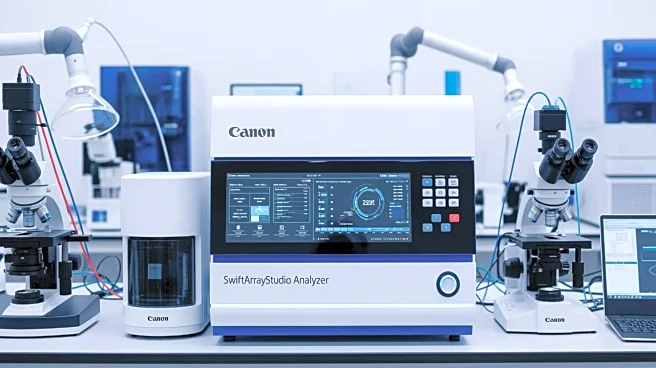What's Happening?
Recent research has uncovered a novel association between polymorphisms in human surfactant protein genes, specifically SFTPA1 and SFTPA2, and the risk of developing retinopathy of prematurity (ROP) in preterm
infants. The study focused on the genetic variants and their interaction with gestational age and oxygen exposure, which are critical factors in the development of ROP. While SFTPA1 variants did not show a significant impact, the SFTPA2 SNP rs1965707 was found to be significantly associated with ROP risk. The study suggests that the C/C genotype of rs1965707 is protective against ROP, whereas the T/T genotype increases susceptibility. This SNP is believed to play a role in retinal vascular development and response to oxidative stress, potentially affecting protein structure and immune cell interactions within the retinal microenvironment.
Why It's Important?
The findings of this study are significant as they provide insights into the genetic factors influencing ROP, a major cause of blindness in preterm infants. Understanding the genetic predisposition to ROP can lead to better risk assessment and potentially guide therapeutic interventions. The identification of specific SNPs associated with ROP risk highlights the importance of personalized medicine in neonatal care, where genetic screening could inform treatment strategies and improve outcomes for vulnerable infants. Moreover, the study underscores the complex interplay between genetic and environmental factors in disease development, paving the way for further research into targeted therapies that address these interactions.
What's Next?
Future research is needed to explore the precise molecular mechanisms by which these genetic variants influence ROP development. Larger, more diverse cohorts are required to validate these findings and assess their generalizability across different populations. Additionally, genome-wide association studies could identify other genetic loci contributing to ROP susceptibility, enhancing our understanding of the disease's pathogenesis. Clinically, incorporating genetic screening into neonatal care protocols could improve early detection and intervention strategies, potentially reducing the incidence of ROP and its associated complications.
Beyond the Headlines
The study raises important questions about the role of surfactant proteins in retinal vascular development beyond their known functions in pulmonary health. The potential impact of these proteins on endothelial cell function and angiogenesis suggests broader implications for understanding vascular diseases. Furthermore, the research highlights the need for interdisciplinary approaches combining genetics, ophthalmology, and neonatology to address complex conditions like ROP. Ethical considerations regarding genetic screening and personalized medicine in neonatal care also warrant discussion, as they involve balancing potential benefits with privacy concerns and access to care.











